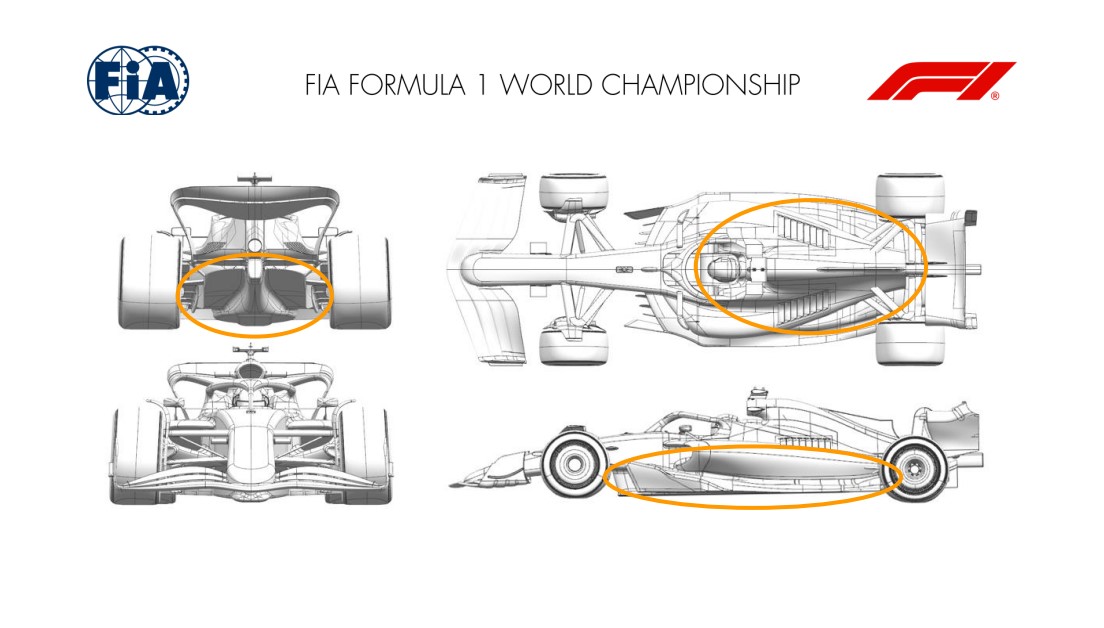Formula 1 cars are technical wonders designed to achieve the highest levels of performance and speed on the circuit.
These vehicles represent the peak of automotive and racing prowess by pushing the boundaries of innovation and cutting-edge technology.
F1 vehicles must be built with the highest consideration for performance, weight, and aerodynamics because they are built to withstand extreme circumstances.
What about all-wheel drive, though?
Let’s examine the drivetrain configurations used in Formula 1 in more detail.
Table of Contents
- 1 Defining All-Wheel Drive (AWD) and Rear-Wheel Drive (RWD)
- 2 A Brief History of F1 Cars and Drivetrain Innovations
- 3 Rationale Behind RWD Dominance in F1 Racing
- 4 Advantages and Disadvantages of AWD in Formula 1
- 5 Previous AWD F1 Cars: Experimentations and Outcomes
- 6 Possibilities and Challenges for AWD in Future F1 Cars
- 7 The Influence of Technological Advancements on F1 Drivetrains
- 8 Conclusion
Defining All-Wheel Drive (AWD) and Rear-Wheel Drive (RWD)
AWD is a technology that enables power to be distributed to all four wheels of a vehicle, boosting traction and road grip, particularly in icy or snowy situations.
Many high-performance and off-road cars find this system to be the perfect option because it helps the driver maintain better control of the vehicle.
Rear-wheel drive (RWD), in contrast, solely drives the back wheels, making the car lighter and more maneuverable.
As it provides a more dynamic driving experience while overcoming some of the weight limits and balance concerns associated with AWD configurations, RWD is frequently featured in sports cars and racing vehicles.
A Brief History of F1 Cars and Drivetrain Innovations

Several drivetrain layouts, including front-wheel drive (FWD), rear-wheel drive (RWD), and all-wheel drive (AWD) possibilities, have been tested by various teams throughout the history of Formula 1.
RWD technology has been used by the majority of F1 vehicles, mostly for weight-saving and handling-related reasons.
Nonetheless, a few teams—including Ferguson, BRM, Lotus, Matra, McLaren, and Cosworth—started developing AWD in the 1960s.
Rationale Behind RWD Dominance in F1 Racing
Weight and handling are primarily to blame for RWD’s domination in Formula 1.
A lighter car with RWD can have quicker acceleration, deceleration, and cornering times. It can also provide a more responsive and nimble driving experience.
Most crucially, the RWD setup keeps the low center of gravity and ideal weight distribution that the advanced aerodynamic and suspension technologies depend on to control the performance of F1 cars.
Advantages and Disadvantages of AWD in Formula 1
Although AWD has a lot of grip and traction benefits, especially on slick conditions, there are noticeable disadvantages when used in F1 racing.
The main drawback is the additional weight, which may have a negative impact on handling and performance.
An AWD system’s additional complexity and probable maintenance needs add to its unfavorability in F1.
Previous AWD F1 Cars: Experimentations and Outcomes
There was little AWD F1 car experimentation in the 1960s.
Despite showing some promise, none of the AWD cars were able to make a substantial impact on technological advancements or race results.
Also, drivers at the time stated that they did not enjoy the understeer and handling issues that came with AWD versions.
Possibilities and Challenges for AWD in Future F1 Cars
Today’s Formula 1 racing is subject to stringent rules, which include limitations on drivetrain configurations.
As of right now, only two wheels may be driven, hence AWD is prohibited in Formula 1.
Although there is always a chance that the rules will alter in the future, teams may face significant logistical, financial, and technical difficulties if AWD is implemented.
The Influence of Technological Advancements on F1 Drivetrains
There is always a chance that improvements in materials, systems, and designs could change the balance of preferred drivetrains in F1 as technology in the automotive industry progresses.
However, it is challenging to estimate the precise effect of technology developments on drivetrains because any adjustments in this area would have to take into account the numerous factors that affect F1 laws and performance standards.

Conclusion
In conclusion, F1 vehicles don’t have all-wheel drives; instead, they rely on the tried-and-true RWD setup to deliver the best performance on the circuit.
AWD has had minimal success in the past, and the current F1 regulations forbid its use in contemporary racing vehicles.
It is still unclear whether a resurrection of AWD interest in F1 will ever happen under new technological conditions as car technology develops.
RWD continues to be the most popular option for these powerful racing cars for the time being.




